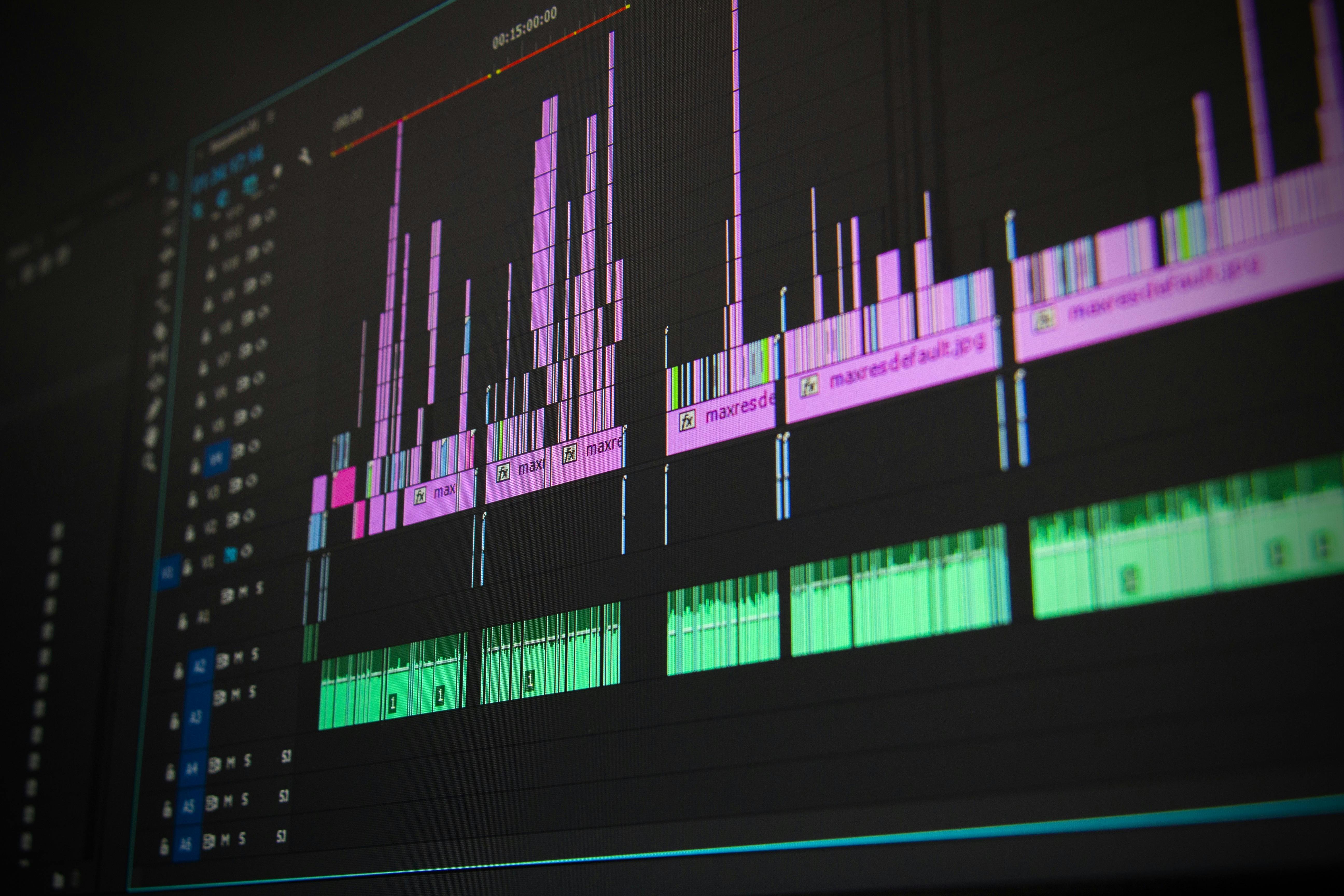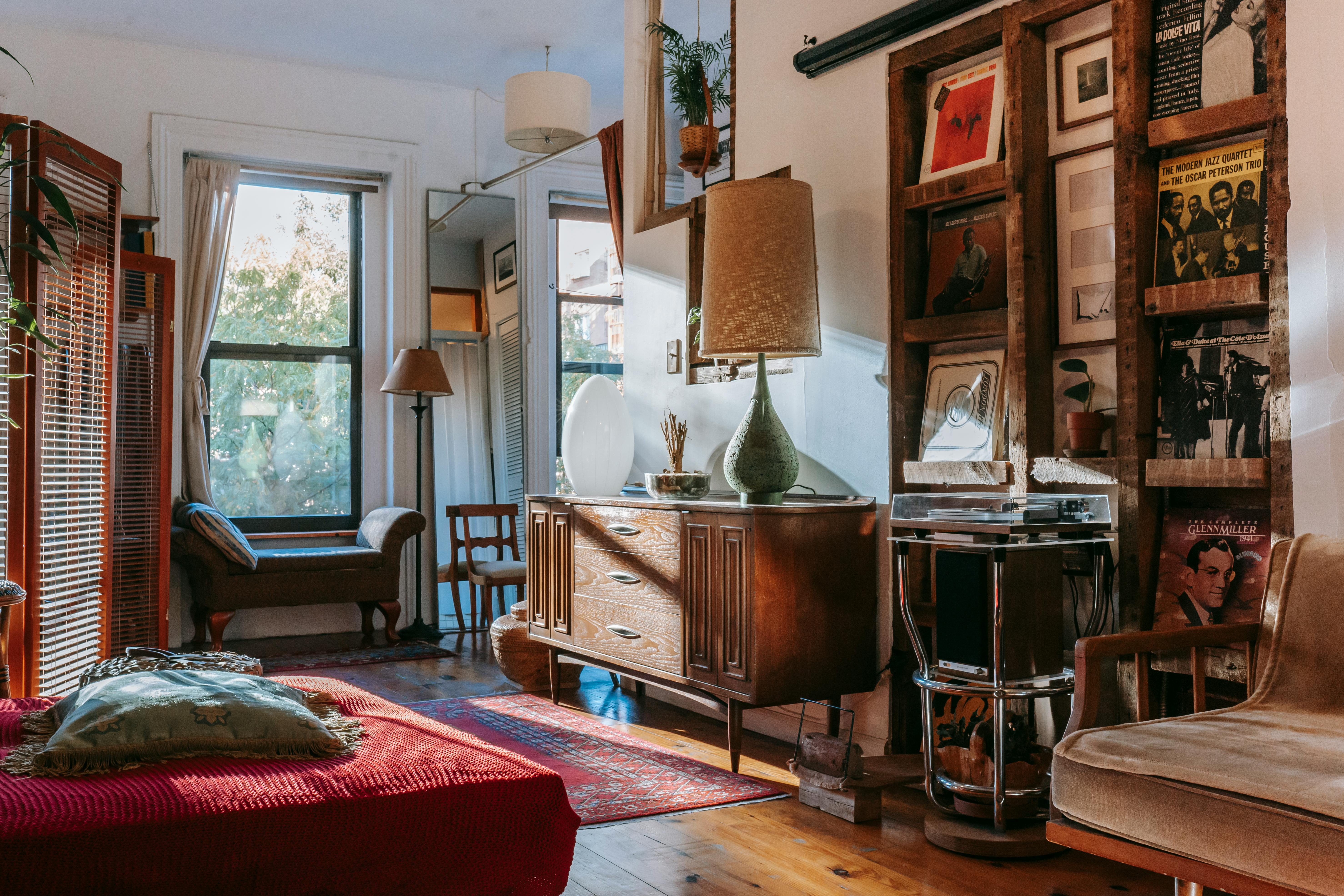When it comes to podcasting, ensuring the quality of your audio is crucial. That’s where headphones come into play. Headphones not only allow you to monitor your podcast’s audio during recording, but they also play a crucial role in the editing process. With a vast array of headphone options available, it can be overwhelming to choose the right ones for your needs. From Sennheiser to Sony, Beyerdynamic to Audio-Technica, this article explores the recommended headphone brands to consider for podcasting, along with other essential podcast equipment. So, let’s dive into the world of headphones and discover how they can elevate your podcasting experience.
Types of Headphones

Closed-Back Headphones
Closed-back headphones are designed with a solid outer shell, enclosing the speakers. This design restricts the sound from leaking out, making them ideal for situations where you don’t want others to hear what you’re listening to. They provide excellent noise isolation, allowing you to focus on the audio without any distractions from the outside environment. Closed-back headphones are commonly used in recording studios and for on-the-go listening.
Open-Back Headphones
Open-back headphones have perforations or vents on the outer shell, allowing airflow and sound to pass freely in and out. This design creates a more spacious and natural soundstage, providing a more immersive listening experience. Open-back headphones are known for their accurate and detailed sound reproduction, making them popular among audiophiles and professional audio engineers. However, they do not provide much noise isolation and can leak sound, which makes them less suitable for use in noisy environments or when privacy is required.
Semi-Open Headphones
Semi-open headphones offer a compromise between closed-back and open-back designs. They have partial openings in the outer shell, which allows some sound to escape while still providing some level of noise isolation. This design combines the wider soundstage of open-back headphones with better noise isolation than fully open-back headphones. Semi-open headphones are a versatile option suitable for various listening scenarios, including both professional and casual use.
Features to Consider
When choosing headphones for podcast recording and editing, there are several important features to consider:
Frequency Response
The frequency response refers to the range of frequencies that a pair of headphones can reproduce. For podcasting purposes, it is important to choose headphones that can accurately reproduce the full spectrum of human speech, which typically ranges from around 80 Hz to 14 kHz. Look for headphones with a flat and balanced frequency response to ensure accurate sound reproduction.
Impedance
Impedance is a measure of how much electrical resistance a pair of headphones present to the audio source. Higher impedance headphones require more power to drive, and they are generally better suited for use with dedicated headphone amplifiers or audio interfaces. Lower impedance headphones can be driven adequately by portable devices such as smartphones or laptops. Consider the impedance of the headphones and ensure compatibility with your audio setup.
Sensitivity
Sensitivity is a measure of how efficiently headphones convert electrical signals into sound. Higher sensitivity headphones require less power to achieve a given volume level, making them more suitable for use with portable devices. However, high sensitivity headphones may be more prone to distortion at higher volumes. Consider the sensitivity of the headphones and choose according to your listening preferences and intended use.
Driver Types
Headphones utilize different types of drivers to produce sound. Common driver types include dynamic drivers, planar magnetic drivers, and electrostatic drivers. Dynamic drivers are the most common and provide a good balance between cost, size, and performance. Planar magnetic drivers offer enhanced accuracy and detail, but they are often more expensive. Electrostatic drivers are known for their incredible detail and clarity but require specialized amplification. Consider the driver type and choose based on your preferences and budget.
Noise Isolation
Noise isolation refers to how effectively a pair of headphones blocks external sounds from reaching your ears. Closed-back headphones generally provide better noise isolation than open-back or semi-open headphones. If you anticipate recording in a noisy environment or need privacy when editing, prioritize headphones with good noise isolation.
Comfort and Fit
Comfort is crucial when selecting headphones for podcasting, especially for long recording or editing sessions. Look for headphones with well-padded ear cups and an adjustable headband for a comfortable fit. Over-ear headphones tend to provide better comfort than on-ear headphones, as they distribute the weight more evenly. Consider the overall design and size of the headphones to ensure a comfortable and secure fit.
Cable Length and Type
Consider the cable length and type when choosing headphones for podcasting. A longer cable provides more flexibility in movement, while a detachable cable allows for easier replacement if damaged. Additionally, consider the type of cable connector (e.g., 3.5mm or 6.35mm) and ensure compatibility with your audio equipment.

Durability and Portability
Consider the build quality and durability of the headphones, particularly if you plan to use them frequently or while traveling. Look for headphones with sturdy construction and materials that can withstand regular use. If you need portable headphones for on-the-go podcasting, consider foldable or compact designs that are easier to transport.
Closed-Back Headphones
Definition and Design
Closed-back headphones are designed with a sealed outer shell, which prevents sound from escaping and outside noise from entering. They have a solid construction and provide excellent noise isolation, making them ideal for recording sessions and environments with high ambient noise. The closed-back design directs the soundwaves towards your ears, resulting in more focused and intimate audio reproduction.
Advantages and Disadvantages
The main advantage of closed-back headphones is their superior noise isolation, allowing you to concentrate on the audio without distractions. They are suitable for recording and monitoring purposes, providing accurate audio representation. However, the closed design can sometimes lead to a less spacious soundstage compared to open-back headphones. The closed-back design also tends to cause a buildup of heat and pressure around the ears, which may become uncomfortable during extended use.
Recommended Closed-Back Headphones
- Sennheiser HD 280 Pro: These headphones offer excellent noise isolation, a wide frequency response, and a durable build. They are a popular choice among podcasters for their balanced sound and comfortable fit.
- Audio-Technica ATH-M50x: Known for their exceptional sound quality and durability, these headphones are a favorite among professionals. They provide accurate sound reproduction and come with interchangeable cables for convenience.
- Beyerdynamic DT 770 Pro: With a closed-back design and a comfortable fit, these headphones provide excellent noise isolation and a detailed sound signature. They are suitable for long recording sessions and are known for their reliable build quality.
Open-Back Headphones
Definition and Design
Open-back headphones feature openings or vents on the outer shell, allowing air and sound to flow freely. This design creates a more natural and spacious soundstage, resulting in a more immersive listening experience. Open-back headphones are favored by audiophiles and professionals who prioritize accurate sound reproduction and a wide soundstage.

Advantages and Disadvantages
The main advantage of open-back headphones is their ability to produce a more accurate and detailed sound. The open design allows air to circulate, reducing pressure buildup and providing a more natural listening experience. However, open-back headphones offer minimal noise isolation and can leak sound, making them less suitable for use in noisy environments or when privacy is required. They also tend to be less portable due to their larger size and lack of noise isolation.
Recommended Open-Back Headphones
- Sennheiser HD 600: These headphones are renowned for their clarity and neutral sound signature. They provide a spacious soundstage and are highly regarded by audiophiles and professionals alike.
- Sony MDR-MA900: With a lightweight design and comfortable fit, these open-back headphones offer a balanced and detailed sound. They provide excellent imaging and are suitable for critical listening and podcast editing.
- Beyerdynamic DT 990 Pro: These headphones deliver a bright and lively sound with a wide soundstage. They are known for their comfortable fit and are a popular choice among audio professionals and enthusiasts.
Semi-Open Headphones
Definition and Design
Semi-open headphones combine elements of closed-back and open-back designs. They feature partial openings in the outer shell, allowing some sound to escape and enter. This design provides a compromise between the accurate sound reproduction of open-back headphones and the better noise isolation of closed-back headphones.
Advantages and Disadvantages
Semi-open headphones offer a more balanced approach, delivering a wider soundstage compared to closed-back headphones while still providing some level of noise isolation. They are versatile and suitable for both professional and casual use. However, they may not provide the same level of accuracy and detail as fully open-back headphones. The amount of sound leakage can also vary depending on the specific model.
Recommended Semi-Open Headphones
- AKG K240 Studio: These headphones offer a semi-open design with a spacious soundstage and a balanced sound signature. They are known for their comfort and accurate sound reproduction, making them ideal for podcast monitoring.
- Audio-Technica ATH-R70x: With an airy and detailed sound, these semi-open headphones provide a balanced frequency response. They feature high-quality materials and are suitable for extended listening sessions.
- Beyerdynamic DT 880 Pro: These headphones deliver a neutral sound with excellent clarity and detail. They offer a comfortable fit and a well-balanced soundstage, making them suitable for critical listening and podcasting.
Best Headphone Brands for Podcast
When it comes to podcasting, selecting the right brand for your headphones is crucial. Here are some of the best headphone brands known for their quality and performance:

Sennheiser
Sennheiser is a reputable brand that has been manufacturing high-quality headphones for decades. They offer a wide range of headphones suited for various applications, including podcasting. Sennheiser headphones are known for their accuracy, durability, and comfortable fit.
Sony
Sony is a well-established brand in the audio industry, known for its innovation and diverse product lineup. They manufacture headphones catering to different needs, from casual listening to professional use. Sony headphones are recognized for their sound quality, comfort, and advanced features.
Beyerdynamic
Beyerdynamic is a German brand renowned for its professional audio products. They produce headphones with meticulous attention to detail, offering exceptional sound quality and durability. Beyerdynamic headphones are popular among audio professionals for their accurate sound reproduction and comfortable fit.
Considerations for Podcast Recording
When choosing headphones for podcast recording, it’s important to consider the following factors to ensure optimal audio quality and comfort:
Accurate Sound Reproduction
For podcasting purposes, it is essential to have headphones that accurately reproduce the audio. Look for headphones with a flat frequency response and good detail retrieval to ensure you can accurately monitor the sound you are recording. This will help you identify any issues with the audio and make necessary adjustments.
Noise Isolation
Adequate noise isolation is crucial during podcast recording to minimize any unwanted background noise. Closed-back headphones provide better noise isolation compared to open-back headphones, making them an ideal choice for noisy environments or when recording outside the studio.

Comfort
Comfort is key during recording sessions, as you may be wearing headphones for extended periods. Look for headphones with well-padded ear cups and an adjustable headband that fits securely. Ensure the weight distribution is balanced to avoid discomfort or fatigue.
Closed-Back vs Open-Back
Consider whether you need closed-back or open-back headphones for your recording needs. Closed-back headphones offer better noise isolation and are suitable for recording in noisy environments. Open-back headphones provide a more natural soundstage but may not be suitable for noisy environments due to sound leakage.
Budget Constraints
Take into account your budget when selecting headphones for podcast recording. It’s important to find a balance between quality and affordability. There are options available in various price ranges that offer excellent performance and durability.
Recommended Headphones for Podcast Recording
Here are some top recommendations for headphones suitable for podcast recording:
Sennheiser HD 280 Pro
These closed-back headphones provide excellent noise isolation and accurate sound reproduction. They have a wide frequency response, ensuring you can monitor the full range of human speech. The HD 280 Pro is known for its durability and comfortable fit, making it an excellent choice for podcast recording.
Audio-Technica ATH-M50x
These closed-back headphones offer exceptional sound quality and durability. They provide accurate sound reproduction and come with interchangeable cables, allowing for flexibility in different recording setups. The ATH-M50x is a popular choice among professionals and casual users alike.
Beyerdynamic DT 770 Pro
These closed-back headphones provide excellent noise isolation and detailed sound reproduction. With a comfortable fit and robust build quality, they are suitable for long recording sessions. The DT 770 Pro’s balanced sound signature makes it an excellent choice for podcasting applications.
Considerations for Podcast Editing
When it comes to editing your podcast, having the right headphones can significantly impact your workflow and the quality of your audio. Consider the following factors when selecting headphones for podcast editing:
Sound Detail and Precision
Accurate sound reproduction is crucial during the editing process to ensure you can hear every detail and make precise adjustments. Look for headphones that provide a balanced and detailed sound signature, as well as good imaging capabilities. This will allow you to fine-tune your audio and ensure a polished final product.
Comfort during Long Editing Sessions
Editing a podcast can be a time-consuming task, so it’s essential to prioritize comfort when choosing headphones. Look for headphones with well-padded ear cups and an adjustable headband that can be worn for extended periods without causing discomfort. Consider lightweight options that won’t put unnecessary strain on your neck and head.
Durability
Durability is important when it comes to headphones for podcast editing, as they may undergo frequent and extended use. Look for headphones with robust construction and high-quality materials that can withstand the demands of regular editing sessions. Detachable cables are also beneficial, as they can be easily replaced if damaged.
Budget Constraints
Consider your budget when selecting headphones for podcast editing. While higher-end headphones may offer advanced features and superior sound quality, there are affordable options available that still provide excellent performance. Prioritize factors such as sound detail and comfort within your budget range.
Recommended Headphones for Podcast Editing
Here are some top recommendations for headphones suitable for podcast editing:
Sony MDR-7506
These closed-back headphones are highly regarded for their accuracy and detail. They provide a balanced sound signature and excellent sound isolation. The MDR-7506 is known for its durability and comfortable fit, making it a reliable choice for long editing sessions.
Beyerdynamic DT 990 Pro
These open-back headphones offer a spacious soundstage and exceptional detail. They provide a balanced frequency response and are highly regarded among audio professionals. The DT 990 Pro’s comfortable fit and durable build make it an excellent choice for podcast editing.
Audio-Technica ATH-R70x
These open-back headphones provide a precise and detailed sound signature. They are designed for extended listening sessions, with a lightweight build and comfortable fit. The ATH-R70x offers an accurate representation of audio, making it ideal for critical listening and podcast editing.
By considering the different types of headphones, important features, and the specific requirements of podcast recording and editing, you can choose the best headphones to enhance your podcasting experience and ensure high-quality audio production. Remember to prioritize accuracy, comfort, and durability when making your selection, and consider the recommendations from top brands in the industry. Happy podcasting!